How Guitar Pickups Work

Guitar pickups are the main component behind the electrifying sound of your guitar. They take the vibrations from your strings and transform them into electric signals that eventually become the sound you hear through your amplifier. Understanding how pickups work is essential, not just for gearheads but for any guitarist who wants their guitar to sound a certain way. Whether you’re looking to upgrade your instrument, dial in a particular tone, or satisfy your curiosity, this article will break down the inner workings of guitar pickups in a way that’s easy to grasp.
What Exactly is a Guitar Pickup?

In simple terms, a guitar pickup is a device that captures the mechanical vibrations of your guitar strings and converts them into electrical signals. These signals are then sent to your amplifier, where they’re amplified and played through your speakers. The key components of a typical pickup include magnets, copper wire, and pole pieces. Together, these elements create a magnetic field around your guitar strings.
When you pluck a string, the metal disrupts the magnetic field, creating an electric current in the coil of copper wire wrapped around the magnets. This current is then transmitted through the guitar’s circuitry, out through the output jack, and into your amplifier. Voila! You have sound.
The Different Types of Pickups
There are three main types of pickups you’ll find in electric guitars: single-coil pickups, humbuckers, and P90 pickups. Each of these types has its own unique sound and is constructed a little differently, giving you various tonal options to explore.
1. Single-Coil Pickups
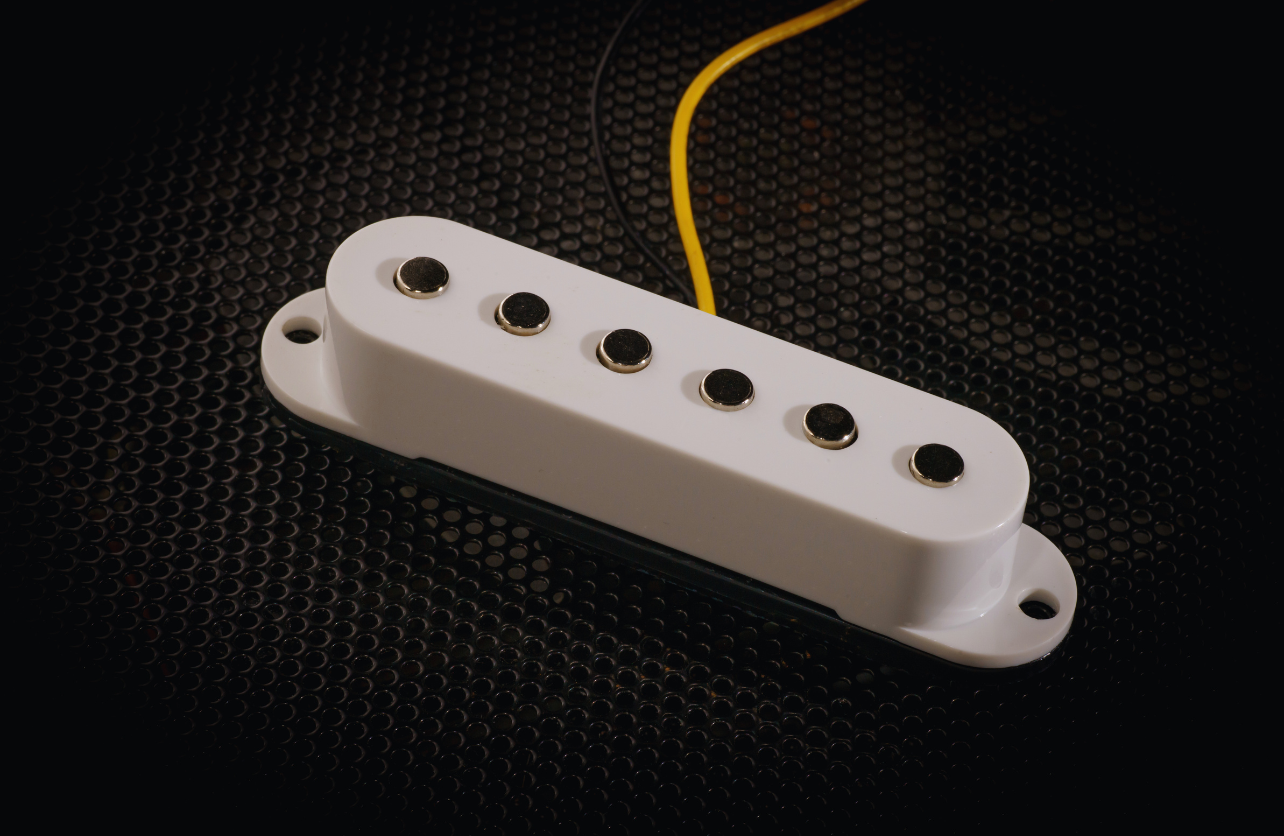
Single-coil pickups are the simplest and most common type of pickup. As the name suggests, they consist of one coil of wire wrapped around a set of magnets. Single-coils are known for their bright, clear sound with a sharp attack, making them perfect for genres like rock, blues, and funk.
However, single-coils have a downside: they’re prone to picking up electromagnetic interference from other electrical devices, resulting in a noticeable hum or buzz when you’re not playing. This hum, while manageable, is something to keep in mind if you play in environments with lots of electronic equipment.
2. Humbuckers
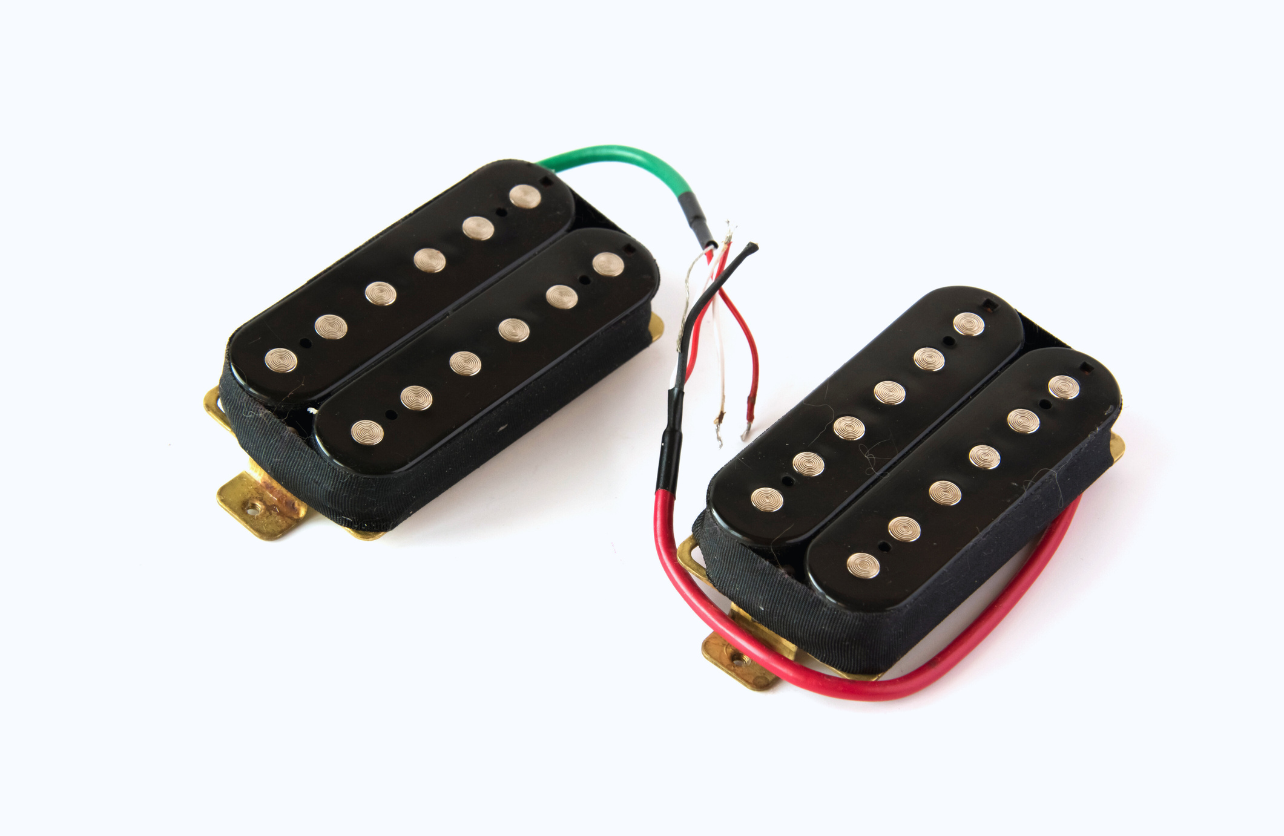
The humbucker pickup was designed to solve the hum problem that single-coils are known for. A humbucker consists of two coils of wire wrapped in opposite directions around two sets of magnets. This design cancels out the hum while still capturing the string’s vibrations, hence the name “humbucker.”
A humbucker’s sound is thicker, warmer, and more powerful than that of a single-coil. It’s a favorite among guitarists who play heavier styles of music, like hard rock, metal, and jazz, as it produces a fuller sound with more low-end response.
3. P90 Pickups
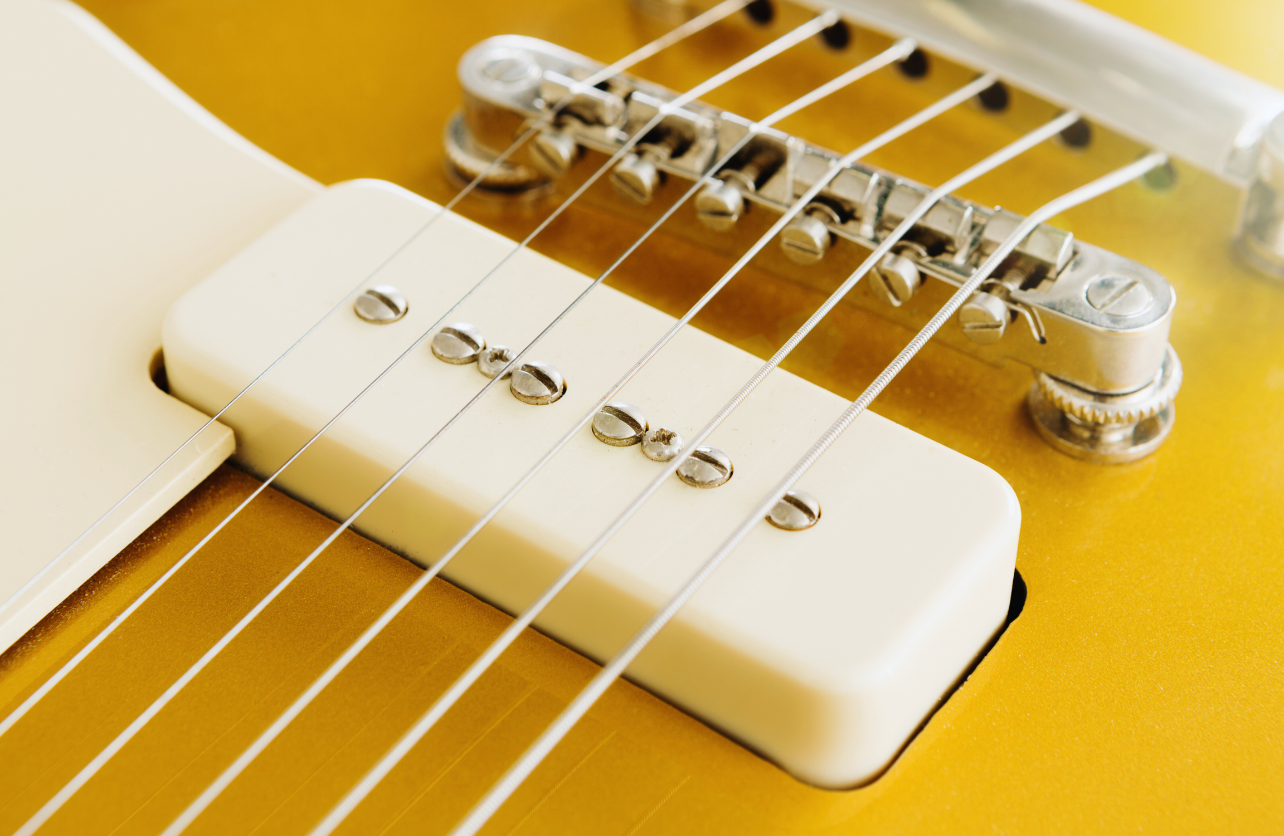
P90 pickups are somewhat of a middle ground between single-coils and humbuckers. They are technically single-coil pickups but with a wider coil, which gives them a fatter sound with more midrange punch than traditional single-coils. They have a grittier, more aggressive tone and are often favored by punk, blues, and rock guitarists who want the clarity of a single-coil but with a bit more bite and power.
Magnetic Fields and Electromagnetic Induction
Now that you know the basic types of pickups, let’s dive into the science behind them. Guitar pickups operate based on the principle of electromagnetic induction, which was discovered by physicist Michael Faraday in the 19th century. This principle states that a changing magnetic field can induce an electrical current in a nearby conductor, like the coil of copper wire in a pickup.
In a guitar, the magnets in the pickup create a static magnetic field around the metal strings. When you pluck a string, it vibrates, disrupting the magnetic field. This disturbance creates movement in the magnetic flux, which induces a voltage in the pickup’s coil. The amount of voltage generated depends on the speed and intensity of the string’s vibration, which is why plucking the string harder results in a louder sound.
This induced electrical current is then sent through the guitar’s wiring, out to the amplifier, where it is boosted and converted back into sound through the speaker. What you hear coming from your amp is essentially an amplified version of the string’s vibration, shaped by the characteristics of the pickup that captured it.
The Impact of Pickup Placement
Where the pickups are placed on your guitar also affects the sound they produce. Pickups near the bridge capture a brighter, sharper tone because the strings vibrate less at this point, producing higher frequencies. Conversely, pickups near the neck capture a warmer, fuller sound because the string vibrations are larger in this area, generating more low-end frequencies.
Many guitars have multiple pickups to give players more tonal options. For example, a Stratocaster typically has three single-coil pickups (neck, middle, and bridge), each offering a different tone based on its placement. You can switch between pickups or even blend them together using a selector switch, allowing for a wide range of sounds from one instrument.
Active vs. Passive Pickups
Another important distinction to make is between active and passive pickups. Most guitar pickups are passive, meaning they don’t require an external power source. The electrical current generated by the pickup is strong enough on its own to be sent to the amplifier.
Active pickups, on the other hand, use a built-in preamp powered by a battery (usually 9V) to boost the signal before it reaches the amp. These pickups are popular in genres like metal because they produce a much higher output and a cleaner, more consistent tone at high volumes. Active pickups also tend to have less noise and interference, making them ideal for high-gain applications.

Pickup Height and Tone
Believe it or not, the height of your pickups—how close or far they are from the strings—can have a noticeable impact on your tone. When pickups are closer to the strings, they produce a stronger signal, which results in more output and often a brighter, more aggressive tone. However, setting the pickups too close can negatively affect your sustain and intonation due to the magnets pulling on the strings.
If the pickups are set too low, you may lose output and clarity, resulting in a weaker tone. Finding the right balance is key, and most guitars come with adjustable pickup height screws, allowing you to tweak the distance to your liking. Experimenting with pickup height is an easy way to fine-tune your sound without making any permanent changes to your guitar.
Common Pickup Combinations and Their Uses
The combination of different pickups on a guitar can drastically affect the range of tones it produces, making certain configurations ideal for specific genres or playing styles. Many guitars feature more than one pickup, and the way they are wired together provides versatility for players to switch between different sounds or blend pickups for unique tones. Below are some of the most common pickup combinations and their typical applications:
1. HSS (Humbucker-Single-Single)

One of the most popular and versatile combinations is the HSS setup, which features a humbucker at the bridge position and single-coils at the middle and neck positions. This configuration is often seen on Stratocaster-style guitars and offers a broad tonal range. The humbucker in the bridge provides a high-output, thick tone that’s perfect for rock, metal, or heavier genres. The single-coil pickups in the middle and neck positions deliver the bright, clear tones typically associated with blues, funk, and softer rock styles.
Common Uses: The HSS combination is favored by players who want versatility, allowing them to cover a wide variety of musical styles. It’s an ideal setup for players who switch between rhythm and lead playing, as the humbucker provides power and sustain for solos, while the single-coils offer clarity and brightness for clean tones and chords.
2. SSS (Single-Single-Single)

The classic SSS pickup configuration features three single-coil pickups and is most famously associated with the Fender Stratocaster. This setup is known for its signature bright, glassy tone with a snappy attack, making it ideal for clean or slightly overdriven tones. Each of the three single-coils offers a distinct sound based on its position: the bridge pickup has a sharp, cutting tone, the middle pickup offers a balanced sound, and the neck pickup is warm and round.
Common Uses: The SSS configuration is synonymous with blues, rock, funk, and country music. Guitarists like Jimi Hendrix, Eric Clapton, and Stevie Ray Vaughan are well-known for using this setup, which provides the iconic chime and spank associated with their styles. It’s a favorite for clean or slightly gritty tones but can also handle moderate overdrive for vintage rock sounds.
3. HH (Humbucker-Humbucker)
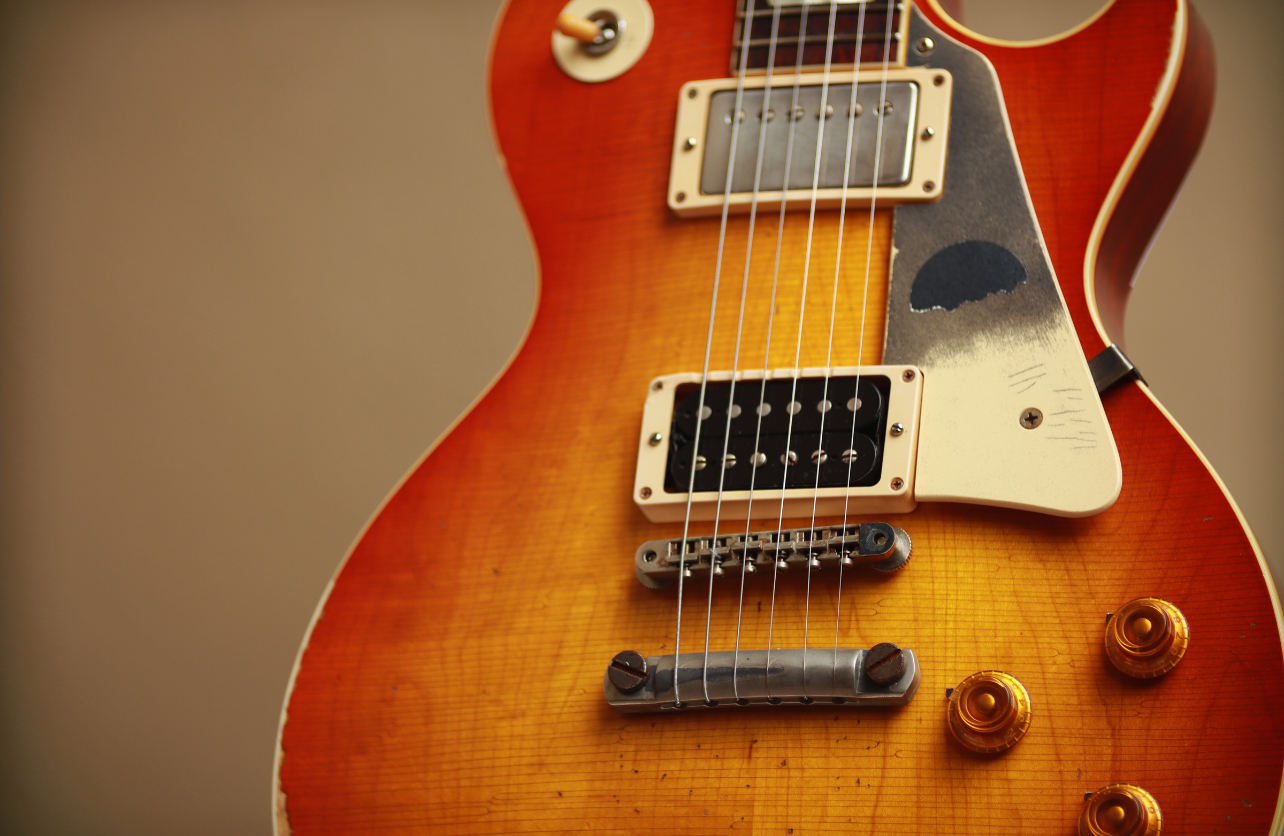
An HH configuration includes two humbuckers, typically one at the bridge and one at the neck. This setup is all about power, sustain, and thick, beefy tones. Because both pickups are humbuckers, this configuration delivers a strong output with minimal noise, making it perfect for high-gain applications and genres like hard rock, metal, and punk.
The bridge humbucker tends to deliver tight, punchy tones with plenty of treble, while the neck humbucker provides a smoother, warmer sound with more bass. Many guitars with an HH setup also include coil-splitting options, which allow you to “split” the humbucker into a single-coil, offering even more tonal versatility.
Common Uses: HH configurations are favored by guitarists in heavier music styles, such as metal, hard rock, and jazz. The thick, warm tones of the neck humbucker are excellent for lead playing, while the bridge humbucker delivers crunch and aggression for rhythm parts. This setup is known for its power and ability to cut through the mix, even in dense, loud settings.
4. HS (Humbucker-Single)
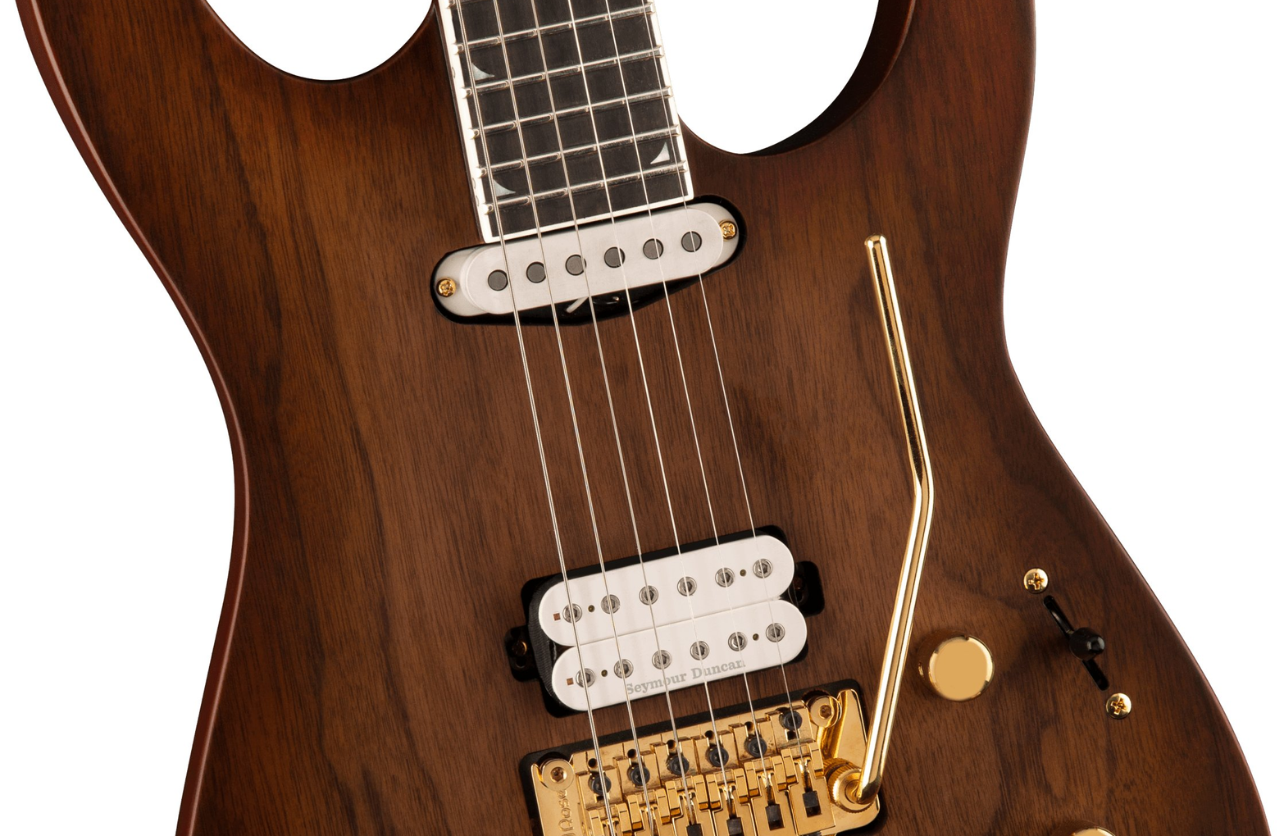
Another versatile combination is an HS configuration, featuring a humbucker in the bridge and a single-coil in the neck. The humbucker provides the power and warmth typically needed for heavier music, while the single-coil in the neck adds clarity and brightness for smoother, cleaner tones. The contrast between the pickups offers a wide range of sounds, making this a flexible setup for players who like to switch between clean and distorted tones.
Common Uses: This setup is popular among guitarists who play a mix of rock, blues, and jazz. The HS combination is great for players who want the heavier sound of a humbucker for rhythm playing, while the single-coil in the neck provides a sweet, glassy tone for clean sections or lead lines. It’s a balanced configuration for players who like to explore both high-gain and clean sounds in one instrument.
5. HSH (Humbucker-Single-Humbucker)

The HSH configuration features two humbuckers (one at the bridge and one at the neck) with a single-coil pickup in the middle. This setup offers incredible versatility, allowing you to get the best of both worlds. The humbuckers provide powerful, thick tones with plenty of sustain, while the middle single-coil adds brightness and clarity when needed. Guitars with this setup often feature a 5-way switch, enabling you to combine the humbuckers and single-coil in different ways to achieve a wide range of sounds.
Common Uses: The HSH setup is ideal for guitarists who need to cover a broad range of genres. Whether you’re playing metal, rock, blues, or funk, this configuration offers the flexibility to go from high-gain distortion to clean, shimmering tones. It’s a popular choice for shredders and progressive rock players who need both the power of humbuckers and the articulation of single-coils in one guitar.
6. P90-P90 (Dual P90s)
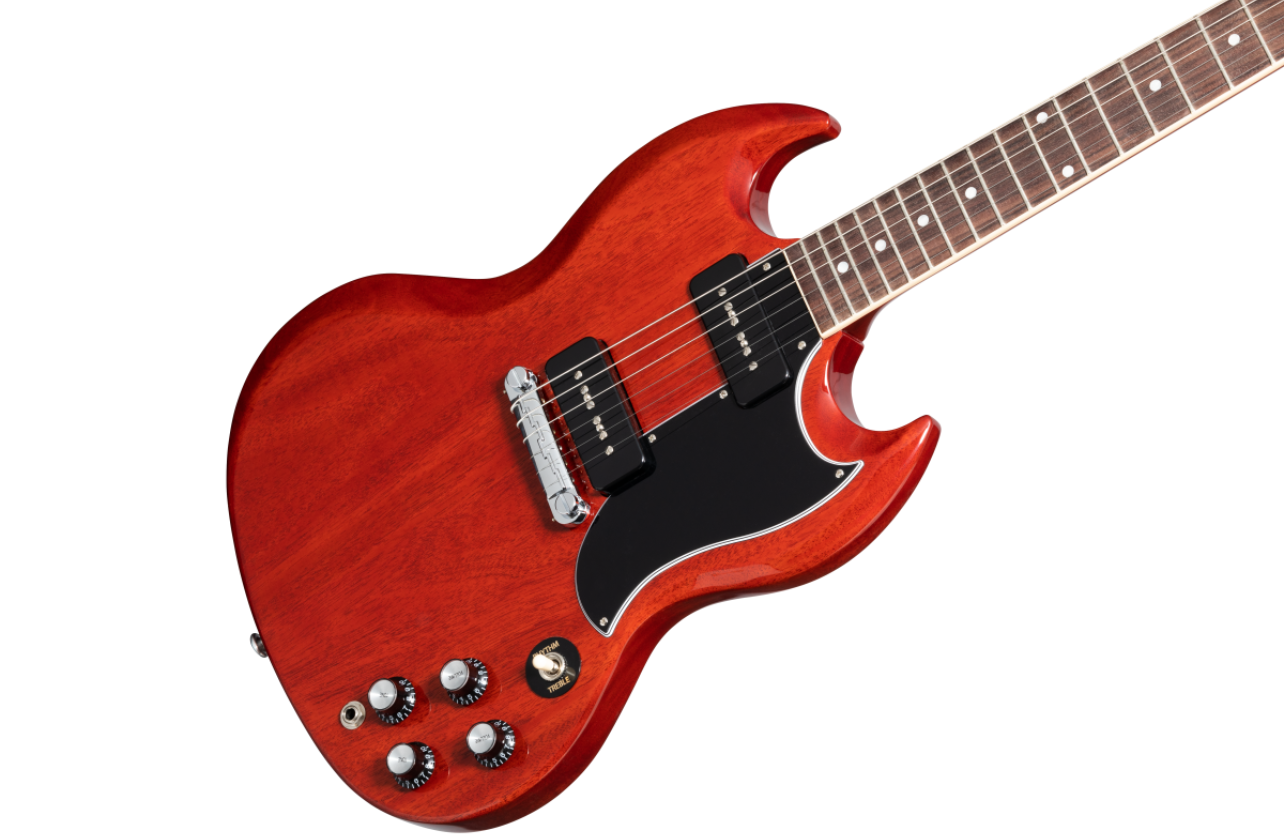
A guitar with two P90 pickups, one in the bridge and one in the neck, delivers a rich, balanced sound that sits between the clarity of single-coils and the warmth of humbuckers. The P90 at the bridge provides a snappy, biting tone that can cut through the mix with plenty of grit, while the neck P90 offers a warm, rounded tone with a punchy midrange. This combination gives you a dynamic tonal range, making it versatile enough for anything from jazz and blues to rock and punk.
Common Uses: The dual P90 setup is ideal for players who want a vintage tone with extra character and attitude. It’s popular in rock, punk, blues, and garage rock, where its raw, growling tone shines through. Guitars like the Gibson Les Paul Special and SG Special often feature this configuration, giving players that signature P90 punch without losing warmth and clarity.
7. P90-Humbucker (P90 in the neck, humbucker in the bridge)
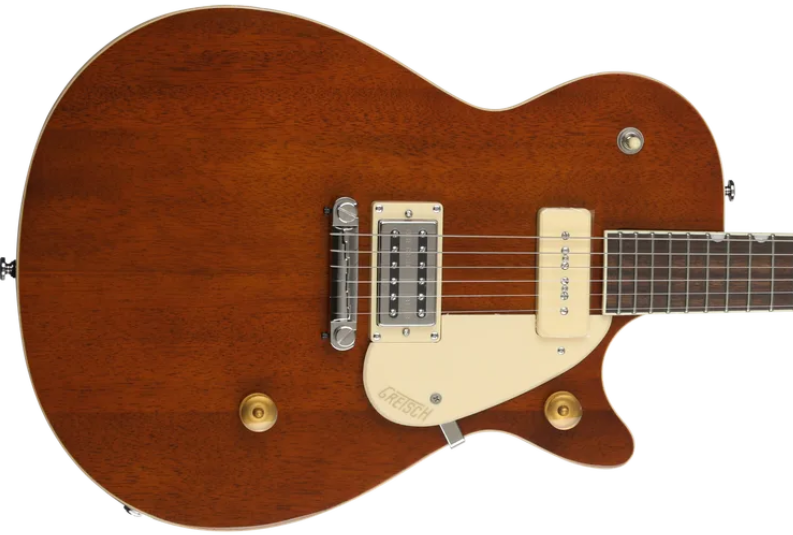
The combination of a P90 in the neck and a humbucker in the bridge offers a lot of tonal flexibility. The P90 delivers a smooth, midrange-heavy tone that’s great for rhythm playing or cleaner sections, while the humbucker at the bridge provides more output and bite, perfect for high-gain distortion and lead playing. This setup allows you to switch between the warm, growling tone of the P90 and the thicker, more powerful sound of the humbucker, giving you a wide range of tones in one guitar.
Common Uses: The P90-Humbucker combination is often favored by guitarists who want the best of both worlds: the vintage warmth of a P90 for clean or lightly driven tones and the raw power of a humbucker for heavier, more aggressive sounds. This setup is great for players who mix rock, blues, and alternative styles, as it offers the flexibility to switch between crunchier rhythm tones and powerful leads.
Guitar pickup combinations play a significant role in shaping the sound of your instrument. Whether you’re chasing the clear, bell-like tones of single-coils or the thick, powerful output of humbuckers, the right pickup configuration can help you achieve the sound you’re looking for. Each combination serves a different purpose and is suited to various musical styles, so understanding how they work together can help you make the best choice for your playing needs. Whether you’re rocking an SSS Strat, an HH Les Paul, or an HSS Superstrat, your pickups are the foundation of your tone.
Your Trust, Our Core Commitment
At Rising Tech, earning and maintaining your trust is the cornerstone of our mission. We're dedicated to transparency, impartiality, and the relentless pursuit of truth in every article, review, and recommendation we publish. Our commitment to these principles ensures that you, our valued reader, are always equipped with reliable and unbiased information. Let us be your trusted guide in the ever-evolving world of technology.